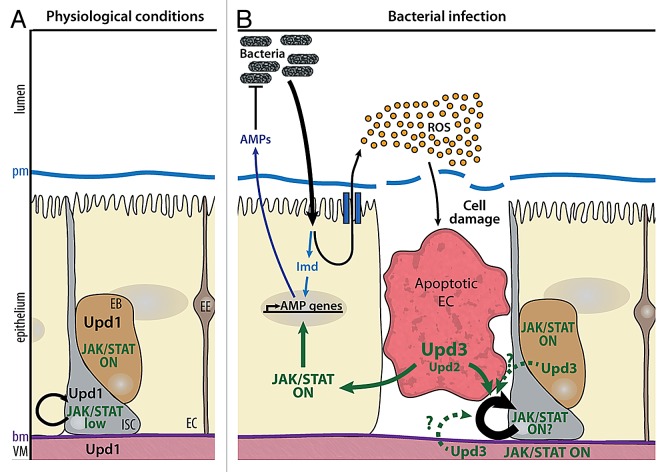Figure 3. Roles of JAK-STAT signaling in gut homeostasis. (A) Under physiological conditions, Upd is expressed by visceral muscles (VM), enteroblasts (EB), and intestinal stem cells (ISC). Basal activation of the JAK-STAT pathway in ISCs and EBs allows ISC renewal and differentiation of EBs into enteroendocrine cells (EE) or enterocytes (EC). (B) Upon ingestion of pathogenic bacteria, the Imd pathway is activated in ECs, leading to the expression of antimicrobial peptides (AMPs). Bacterial infection also results in the production of high levels of reactive oxygen species (ROS) in the gut lumen, which induces cell damage and EC apoptosis. Upd3, and to a lower extent, Upd2 produced in apoptotic ECs induce both ISC proliferation and EB differentiation, in order to regenerate gut epithelium. The cells in which JAK-STAT signaling is required to stimulate ISC proliferation and the role of EGF-R signaling in this process remain to be firmly established. The position of the peritrophic and basal membranes (pm and bm respectively) is indicated on the left.

An official website of the United States government
Here's how you know
Official websites use .gov
A
.gov website belongs to an official
government organization in the United States.
Secure .gov websites use HTTPS
A lock (
) or https:// means you've safely
connected to the .gov website. Share sensitive
information only on official, secure websites.
